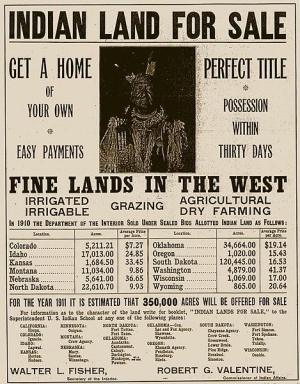Originally published on Celebrating New Mexico Statehood, 4/7/2016
Quite a few challenges accompany the process of writing encyclopedic entries for the eHillerman portal. We encounter fictitious locations, Navajo terminology that is difficult to translate, and various Native American traditions and beliefs that we do our best to research and describe, although as cultural outsiders, ultimately they are impossible for us to fully grasp. On a more technical level, we must at times compress large amounts of substantial information into manageable reflections fit for our expanding encyclopedia. Many terms, both in and out of the context of the Southwest, stand out in their historical, geographical, or cultural importance, and beg for a definition that would encompass the basic facts along with background information, contextual commentary, and cross-reference connections. Such terms, when researched and composed, often end up as lengthy essays rather than succinct definitions, in which case editorial decisions must be made.
A recent example from Hillerman’s 1973 novel Dancehall of the Dead is “allotment,” a term mentioned in passing to describe a piece of land in a remote corner of the Navajo Indian Reservation in western New Mexico. The question arises, how much and what kind of information and commentary can or should be included in this particular encyclopedic record?
Before the arrival of European settlers, indigenous peoples in North America did not perceive the land as something that could be divided and owned. Because such views and values, as well as the lifeways intrinsic to them, posed physical, geographical, and cultural obstructions to the developing nation, the American government took it upon itself to assimilate Native peoples, in part as a way to gain control over territories and to establish a dominance of Western ideologies. A central measure of the assimilation initiative was the 1887 General Allotment Act, which divided reservation lands into small plots, each allocated to one family, with leftover parcels declared open for homesteading. This new configuration of land stood in stark contradiction to both the nomadic lifestyle many Native societies relied on, and to the kinship system that understood broad communal ties to be much more significant than the isolated nuclear family. The Allotment Act had harsh consequences for Native communities, imposing settled life practices that undermined traditional means of livelihood, fractured social structures, and greatly reduced the size of reservation territories.
A lot more could be said about the events and encounters that led to the Allotment Act and its ensuing effects, many of which are felt to this day on reservation lands. The above paragraph is a condensed version of an extensive exploration of the term.
Part of the vision of our project is to expand and augment Hillerman’s fictional works, adding the pertinent historical background and the significant social, political, and cultural contexts enfolded in seemingly peripheral terms. Accordingly, we must engage daily in assessing the dynamic scope of our research, writing, and editing tasks. And while this is not always an easy or smooth process, both technically and intellectually, it is one that as graduate students and aspiring scholars we welcome and gladly commit to.

